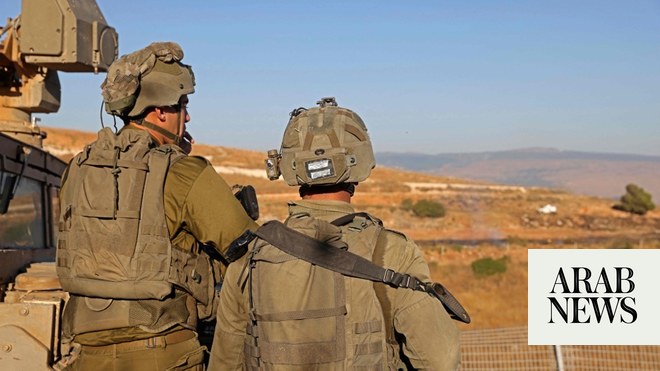
A civilian who works as a barber contracted with the Spanish battalion in UNIFIL was wounded by Israeli sniper fire on the Abil Al-Qamh road
Hezbollah MP: If the party’s drones reached the outskirts of Tel Aviv once, they can reach it anytime
BEIRUT: The Israeli army has begun using snipers across the land border with Lebanon to target passersby on adjacent roads after it paralyzed life in the border villages through the systematic destruction of their neighborhoods with airstrikes, drones, and incendiary bombs for nearly 11 months.
On Tuesday, a civilian who works as a barber contracted with the Spanish battalion in UNIFIL, the UN peacekeeping mission in Lebanon, was wounded by Israeli sniper fire on the Abil Al-Qamh road.
The barber was hit by several bullets in his side while waiting in a Rapid-model car with a private license plate at a specific point, where a patrol from the Spanish battalion was supposed to pick him up, as usual, and take him to his workplace at the UNIFIL headquarters opposite the Metula settlement.
He was transported to Marjayoun Governmental Hospital for treatment.
This is the second time contractors working with UNIFIL have been targeted in less than 24 hours.
On Monday morning, two civilians working for a company providing services to UNIFIL were killed on the Naqoura road by an Israeli drone strike that targeted their car.
Hostile operations between the Israeli army and Hezbollah have continued at a relatively lower rate.
Israeli airstrikes targeted the outskirts of the towns of Aita Al-Shaab and Markaba, while another strike hit the heights of Jabal Al-Rihane.
The Israeli army also opened fire with heavy machine guns at dawn toward Ras Naqoura and Labouneh. The town of Khiam was subjected to heavy artillery shelling.
Hezbollah’s military media announced that the party targeted in the afternoon “surveillance equipment at Al-Jardah site with appropriate weapons, hitting it directly and destroying it.”
MP Hassan Ezzeddine, a member of Hezbollah’s parliamentary bloc, said the party “managed to impose a deterrence equation with the Israeli enemy through its response to the assassination of military commander Fuad Shukr after the party’s drones reached the outskirts of Tel Aviv.” He added: “Whoever reaches there once, can reach it every time.”
Meanwhile, the UN Office for the Coordination of Humanitarian Affairs stated in an updated report on the situation in southern Lebanon that “the total number of civilian deaths since Oct. 8, 2023, has reached at least 133, while the Lebanese Ministry of Health reported that the total number of casualties since that date has reached 2,412, including 564 deaths.”
The report revealed that “the number of displaced individuals from the border towns has increased to 111,940, with 94 percent of them originating from the districts of Bint Jbeil, Marjeyoun, and Tyre.”
According to the report, “tensions in southern Lebanon reached a critical level over the past three weeks as the conflict intensified, increasing the risk to civilians.
“The security situation along the Blue Line remains unstable, with approximately 150,000 residents living within 10 km of the border facing daily shelling and airstrikes.”
The report indicates that “the Inter-Sector Coordination Groups have been working since August to develop a contingency plan in response to the escalating situation in southern Lebanon.
“The groups are focusing their efforts on assessing the capabilities of various sectors. The UN (Office) for the Coordination of Humanitarian Affairs has assisted in humanitarian sectors to address the current circumstances in Lebanon.
“This includes cash assistance to 290 farmers (80 in the south and 210 in Nabatieh) to support their livelihoods and agricultural assets.
“Additionally, 6,700 individuals received emergency cash assistance since June, while 1,614 Lebanese citizens and 778 Syrian refugees were granted cash aid to secure shelter from October 2023 until the report’s preparation date.”
The assistance extended to the education sector, where 10,250 displaced children received emergency scholarships and were re-enrolled in schools to resume their educational programs.
Additionally, food aid was provided to displaced individuals residing in refugee centers, as well as those who were taken in by relatives and families in the regions of Tyre, Sidon, Nabatieh, Beirut, Mount Lebanon, and Baalbek-Hermel.










